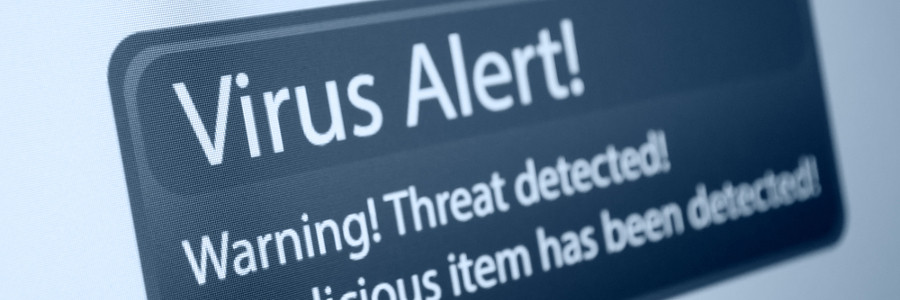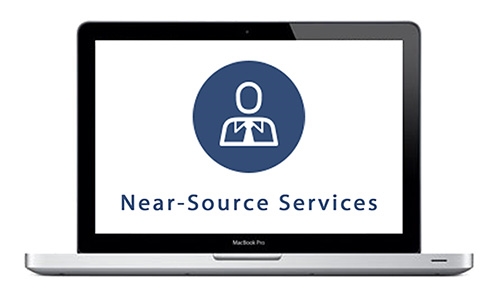It's scary to think you can be simply browsing the Internet when WHAM! a screen pops up out of nowhere claiming that you have been hijacked and will need to pay a bitcoin to free your computer. Unfortunately, ransomware like this is not uncommon. But now there's a new, more devastating virus that asks victims to pick other victims to replace them in order to get their computer information back safely.
New ransomware demands sacrifice
Increase productivity with web monitoring
IT jargon: a glossary of cybersecurity terms

Everyone hates jargon. It’s ostracizing and off-putting, but somehow we just keep creating more and more of it. For those who have adopted an “if you can’t beat ‘em, join ‘em” philosophy, we have just the list for you. Let’s take a look at some of the most relevant cybersecurity terms making the rounds today.
4 Security risks to consider with BYOD
Is your computer infected with malware?

Has your computer been running slow lately? Are you getting a bunch of unwanted pop-ups? Then it’s possible your system’s security has been breached. Being able to identify whether or not your computer is infected with malware will allow you to quickly come up with antivirus solutions to protect your system.
Chimera ransomware: what to know

You are probably already familiar with ransomware, one of the nastier forms of malicious software that does the rounds every now and again, but what you may not already be acquainted with is a ransomware program called Chimera. Only recently discovered, Chimera’s creators have taken the already unpleasant ransomware program’s scare tactics to the next level.
Macs: Hardly Malware-proof
Security firms and experts are finding out that since people tend to be more complacent security-wise when using a Mac, they make for pretty ripe pickings for unscrupulous online scammers, fraudsters, and thieves. Macs are famous for a lot of things – some true, some false. For instance, many people believe that Macs are virus- and malware-proof – but unfortunately that’s not true. Just because many of the malware and viruses out there are targeted toward the Windows OS, Macs are not impervious to attack as well. And the operative word is “targeted”. Security firms and experts are learning that since people tend to be more complacent security-wise when using a Mac, they make for pretty ripe pickings for unscrupulous online scammers, fraudsters, and thieves. Not only are more security flaws being discovered on the Mac OS and programs, but also more viruses are being created that specifically target those vulnerabilities. Of course, the scale of the threat can be debated – but while it is true that more viruses and malware are designed for Windows, it’s also true that some of these viruses can be applicable to Macs as well, in addition to those specifically designed to attack the Mac OS platforms. If you aren’t convinced, then this video might just turn you into a believer: https://www.youtube.com/watch?v=RTeSYmQS820&feature=player_embedded . Here, a Mac anti-virus program catches a would-be Trojan. And that’s just one of the many hundreds of thousands of Mac viruses and malware out there. Is it sound business practice to take risks with your system security? Whether you use Windows or Mac, you need malware protection – because too often all it takes is a single incident to bring your whole system on its knees. Give us a call and we’ll be happy to discuss your options with you and offer a tailor-made security solution that is guaranteed to keep you safe, regardless of which OS you’re using.
Majority of Malware Attacks are Triggered by USB Enabled Drives
It looks like gone are the days when employees can safely transfer files using the ever reliable USB device. According to various reports, there is an increasing number of malware attacks targeting USB devices. Small businesses should be very wary of using USB drives, without considering security parameters to prevent these malware threats. A USB device is indeed a useful, economical way to transfer data. In fact, according to Gartner IT research and advisory company, there were roughly 222 million USB devices shipped in 2009. However, a recent study shows that though USB devices are a convenient means of transferring information, they can also serve as channels to transmit potential threats. In fact, 25% of malware these days is built to spread via USB devices. Most small businesses particularly are utilizing USB drives for the convenience they bring. But as consumers become more technically savvy about malicious attacks via email and other modes, cyber offenders are now shifting to USB devices to spread malware. Moreover, they want an easier and faster way of hacking into secured computers, making malware distribution via USB devices a viable option. Being a small to medium-sized business, your company might also be at risk for the following reasons: Outdated operating systems. Newer versions of operating systems like Windows Vista and Windows 7 definitely provide more security against malware-infected USB devices. If you’re still running on Windows XP, contact us immediately and we will update your operating system to avoid unwillingly sharing your confidential business information to servers across the globe. We will ensure that you have the latest version of Windows, Macintosh, or whatever OS your company uses. Insufficient security knowledge. Not all employees are familiar with malware attacks via USB devices. Some may even plug a misplaced flash drive into their work PC, hoping to find its rightful owner—without knowing that it contains a script that can search sales record and or contact list. As your IT service provider, we will help you implement security guidelines against unsafe USB use to prevent potential malware attacks that can ultimately harm your business operations. No other options to share information. Most small businesses solely rely on USB devices to share data with their employees. While it is convenient, using them on a daily basis can be unreliable and risky. Talk to us about cloud-based solutions and other better and more secure methods to share and store files. We believe that USB-spread malware is even more perilous than email and other means of transmitting malware. That’s why companies, no matter how big or small, should take this alarming issue seriously. Contact us soon and let us help you protect your business from any would-be malware attacks.
Number of Infected Websites Doubles in One Year
According to a new study released by security firm Dasent, the number of malware-infested websites has increased to 1.2 million in 2010, from 560,000 in 2009. Dasient , a company specializing in combating malware on websites, has released a new report claiming that over 1.2 million websites were found to be infected by malware in the third quarter of 2009 , more than double the number during same period last year. These infected websites are especially dangerous since, unlike other forms of malware vectors, they don’t require the user to click on a link or open an attachment. They infect users through “drive-by-downloads” or by just visiting the infected website. Hackers take advantage of the dynamic and interactive features of today’s modern websites and social networking sites to deliver their payload. Other dangerous forms of infected websites are those hosting fake antivirus scams, which fool users into downloading malware posing as legitimate antivirus software, as well as malvertisements, which pose as legitimate advertisements but instead are malware vectors. With the growing threat of malware, how confident are you that your systems are safe? Contact us today and find out how we can help.
Malicious Software Dupes Users by Scaring Them
If you’ve seen a popup window warning you that your computer may be infected with a virus, think twice before clicking on it — you might be getting duped into spending money on malware. Security firm McAfee has published a report early in the year showing that up to a million people worldwide fall victim to so-called “scareware” each year. Scareware, or rogueware, is software that poses as legitimate security software but in reality are dupes to steal credit card information from users, or even worse are Trojan Horses to spread malware. Scareware is distributed primarily through the Internet via malicious websites that pop out windows that fool users into thinking their system may be infected. Users who click on the popup windows are redirected to a website which encourages them to buy fake security software online. Scareware are especially dangerous as it hits users in many ways: by duping them out of their money, injecting viruses or other forms of malware into their system, or even holding them ransom — for instance, by taking over users’ systems then demanding more payment to free the data stored in the infected computer. It’s a good thing that there are many ways to protect your system against scareware. One is using security software from legitimate and well established software vendors — through their legitimate sales channels. Another is by being prudent with offers and downloads when online. For a small business there are other ways such as blocking or filtering these malicious websites to ensure the security of the entire business. If you want to find out more about these solutions to protect small business networks — let us know. We offer managed security services for small business that can protect against online threats.




